Frequency meter / crystal tester kit
Very cheap frequency meter / crystal tester kit, bought on Aliexpress for less than $5.
The kit is shipped without any instruction, but it is not complex and all parts are clearly marked on the silk screen PCB layer. Cursory instruction pdf file is easy to find though, same as full schematic of this popular device.
One 1 kOhm resistor was missing. To be picky, 1 nF capacitor failed later when I was desoldering / bending it, which is quite weird (no visible damage but lost capacitance).
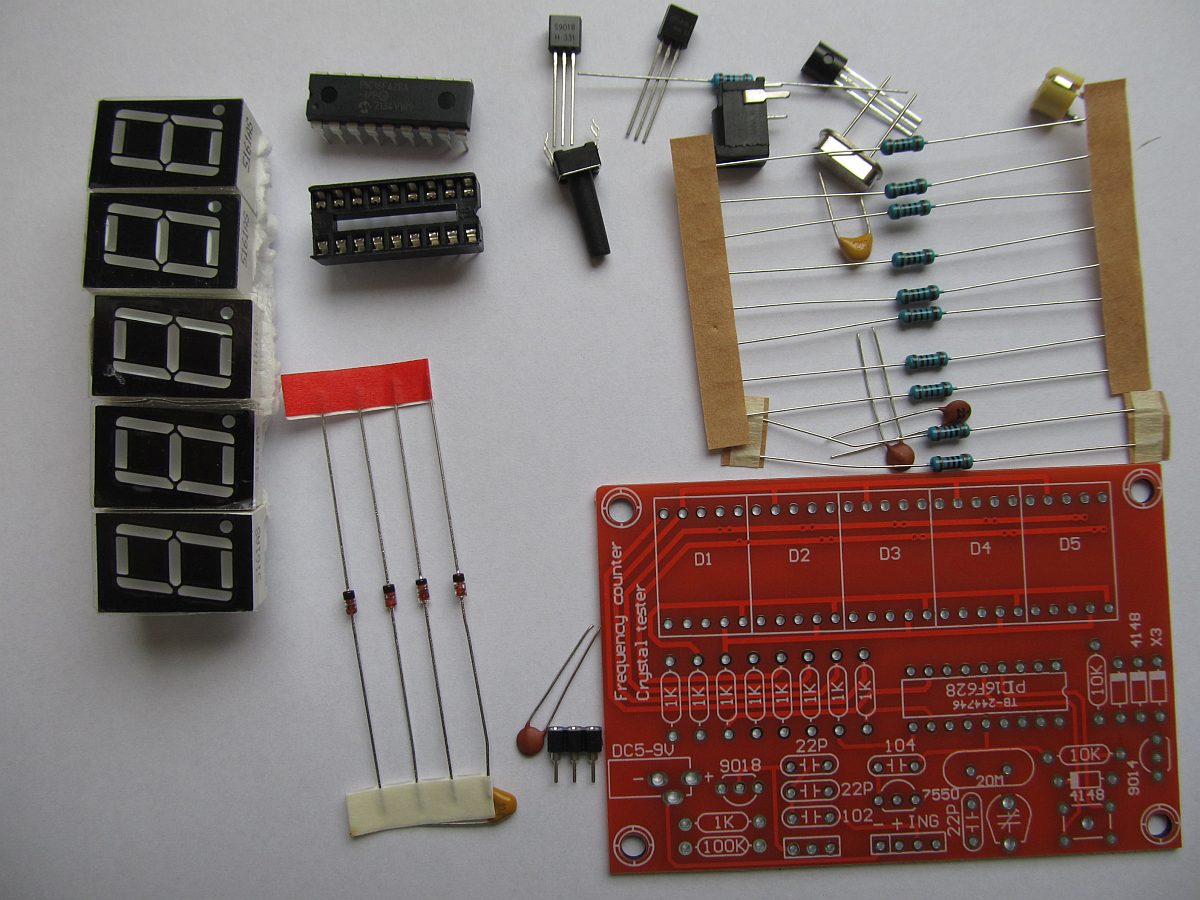

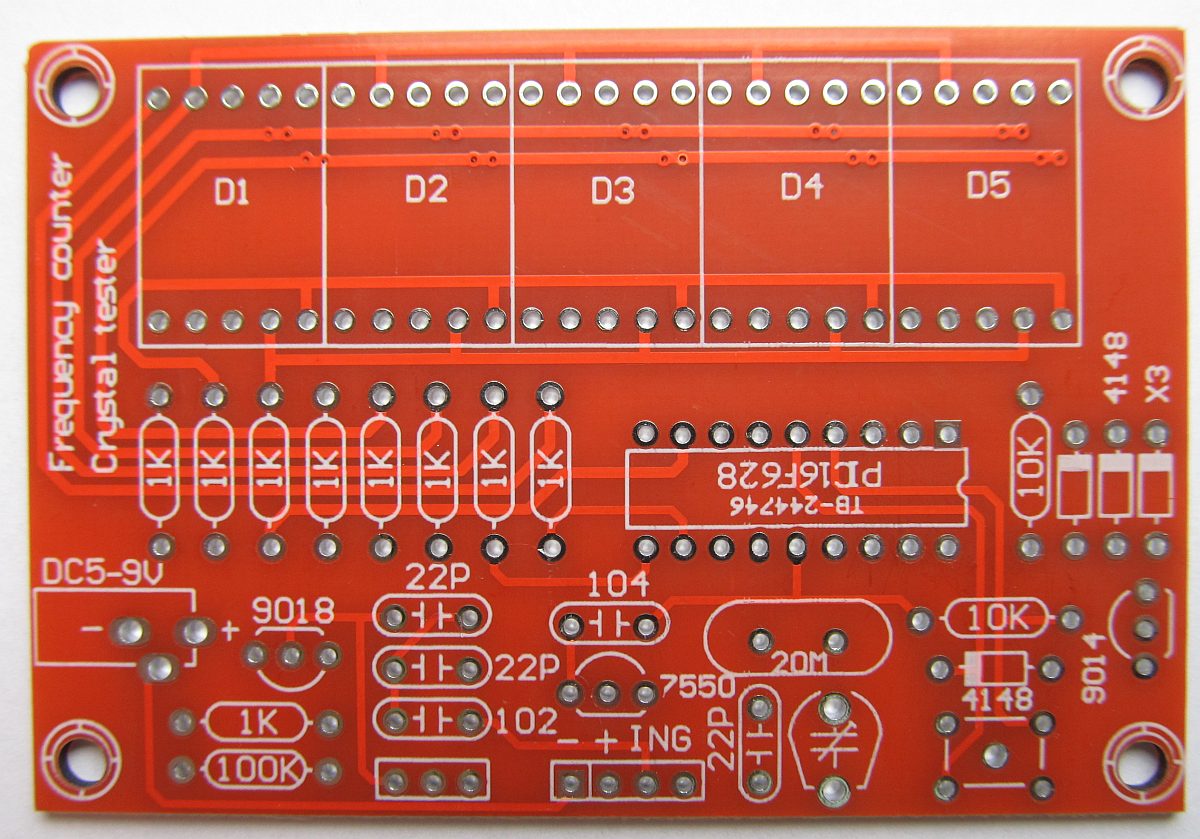
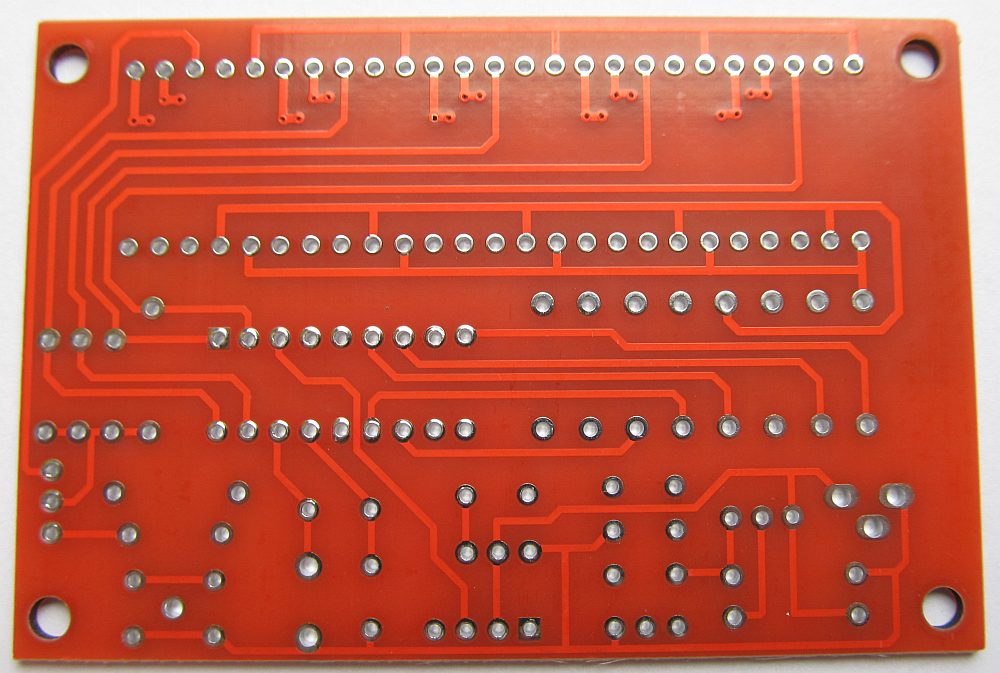
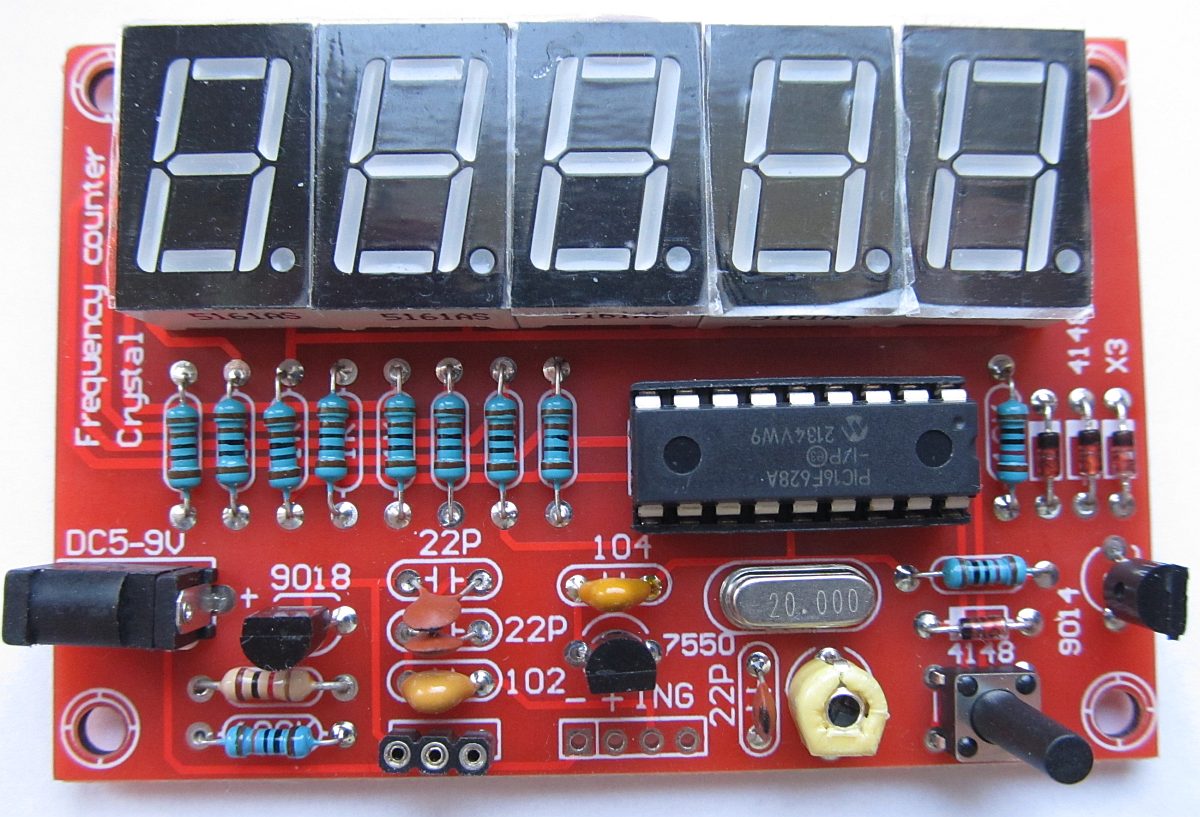
This project was created by Wolfgang Büscher, DL4YHF. From the description it looks like it started before 2006 with quite a few updates and follow-ups.
With the ability to add/subtract selected intermediate offset frequency, it was focused on radio purposes and crystal
tester function is present only in the clone. On the other hand clone is missing signal preamplifier which is quite important considering that input signal is connected
directly to 5V-powered PIC microcontroller. Note that this PIC micro requires less than 1 V and more than 4 V for L/H states on Schmitt input when powered from 5V:
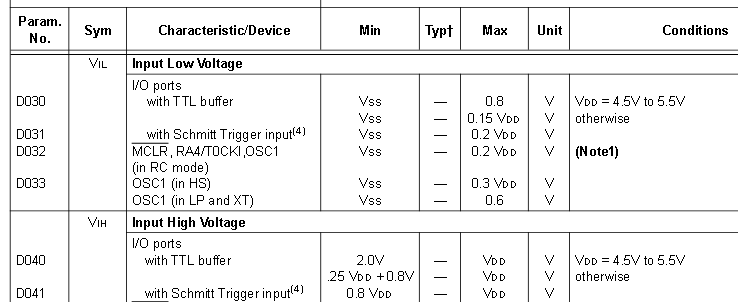
Few people described removing crystal tester function and instead reusing 2SC9018 transistor (high frequency / current gain bandwidth product fT= 1100 MHz typ.) for a signal preamplifier. BF199 was used in the original DL4YHF version.
I've checked about two dozen various crystals with this tester and it was slightly disappointing. None of my 4.9152 MHz or lower crystal was detected. 24 MHz and 27 MHz (overtone?) crystals were giving readings equal to 1/3 of their nominal frequency (but other one 24.576 MHz was giving exact reading). 7.1 MHz to 18.432 MHz were fine.
Crystal testing was partially improved (now working with all my 4 MHz crystals) after swapping capacitor between 2SC9018 base and emitter from 22 pF to 82 pF.
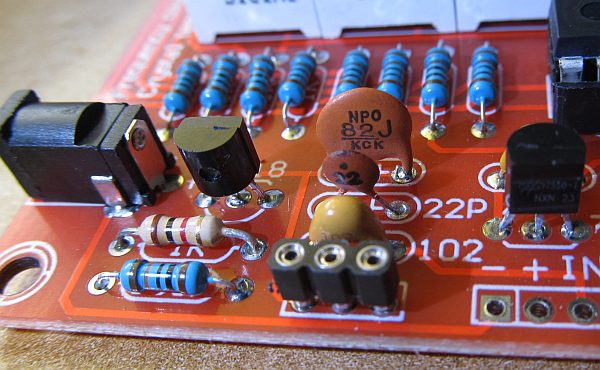
My second modification: changing power supply of crystal-based oscillator from unregulated to regulated 5 V. Normally oscillator in this kit is powered
directly from power socket which seems like a questionable decision. To fix this, I've cut the trace from the power socket to 2SC9018 collector and added a wire powering oscillator
from 7550 (HT7550) voltage regulator.
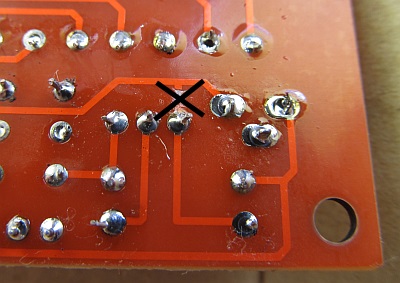
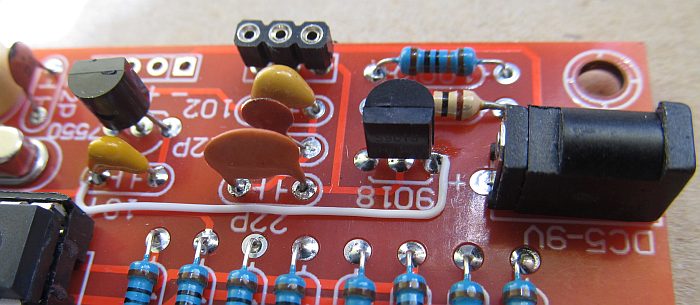
Using old pickit 2 clone with DIP socket for PIC16F628 I've swapped firmware to counter_hires_event.hex from https://github.com/Ho-Ro/DL4YHF-Frequency-Counter, without some radio-related functionality but improving resolution for low frequencies. It also increases measurement range to over 100 MHz (without guarantees as this is over PIC specification). Just in case I've read original_firmware.hex from the device first.
It looks like this kit can work with lower than recommended supply voltages. I've tested 3.8 V from bench power supply through barrel socket. This also allows to measure frequency of lower amplitude signals (3 V signal from AN8008 multimeter generator works).
Third modification: adding input amplifier to make frequency meter less picky about input signal amplitude. I also wanted
to keep original crystal tester function, so I've added mechanical switch as function selector. Another option, not requiring switch but perhaps slightly less convenient,
would be leaving crystal-based oscillator output not connected, signal amplifier always connected and connecting signal amplifier input manually to oscillator output on demand.
Unfortunately from my testing with Si5351A generator, it was limited to about 36 MHz.
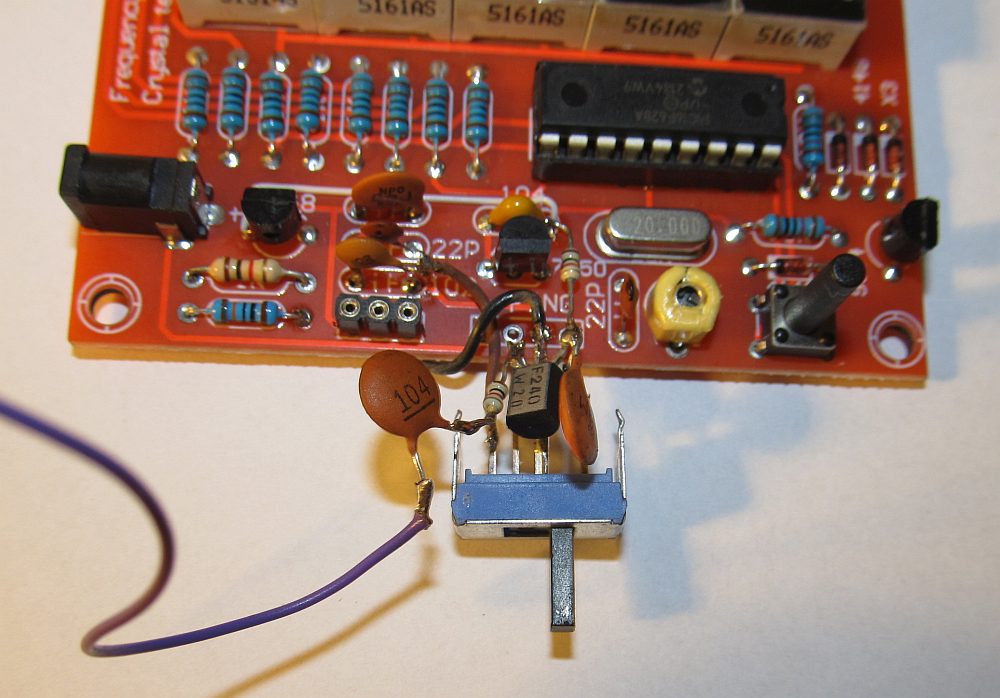
My final schematic (two previous modifications included, C3 should be 82 pF):
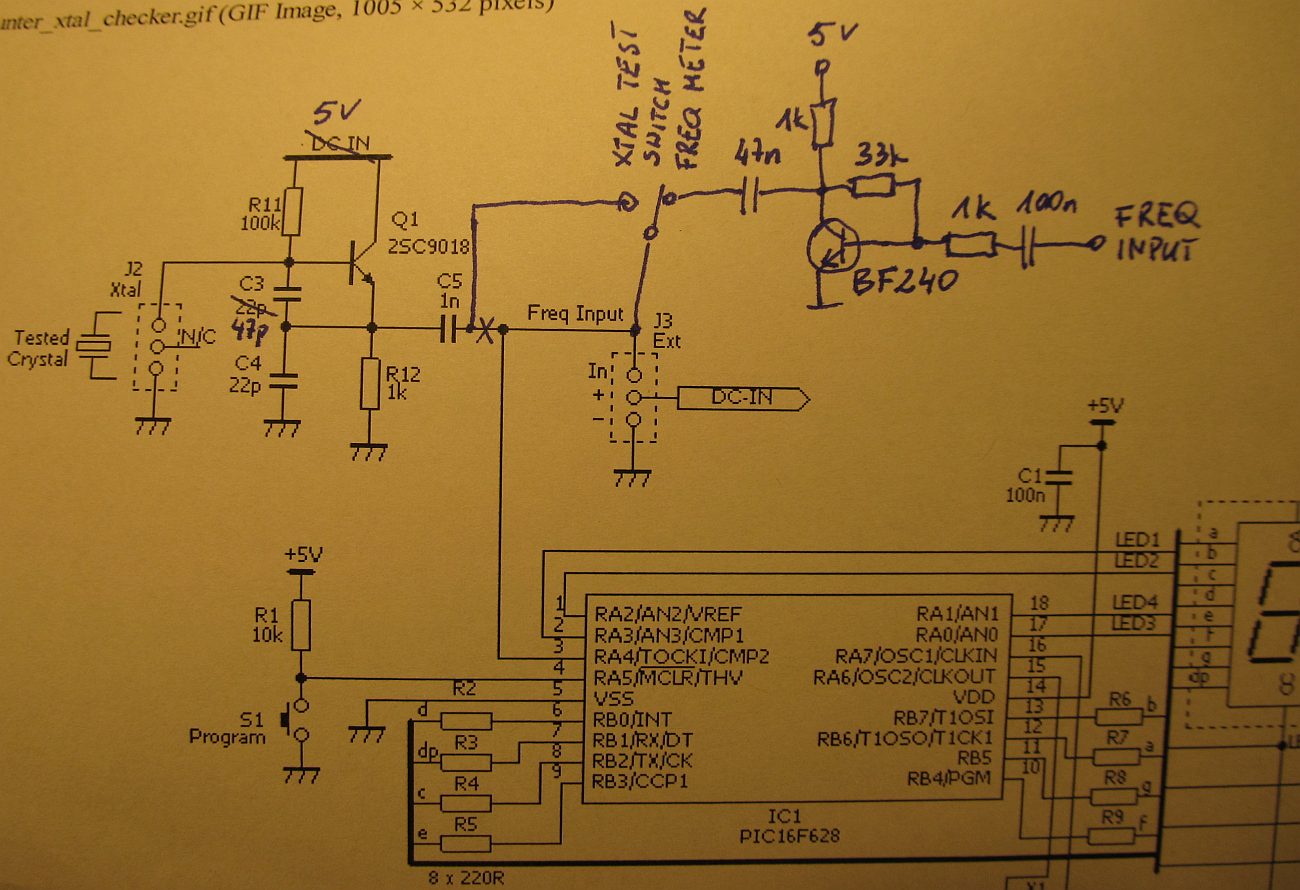
Minor gotcha: if barrel power supply socket is used (I've found e.g. appropriate USB - barrel cable), "-" pad on the PCB (next to the signal input) is disconnected, so it might be not usable as a ground for input signal.
External links
EEVBlog - front end modificationSome tests of this kit
Another description of this kit
Video series
TheHWcave/PIC-freq.counter-modification: alternative firmware improving resolution and adding few RPM modes
Ho-Ro/DL4YHF-Frequency-Counter: alternative firmware improving resolution
Similar kit with preamplifier
Back to reviews / teardowns / repairs list.